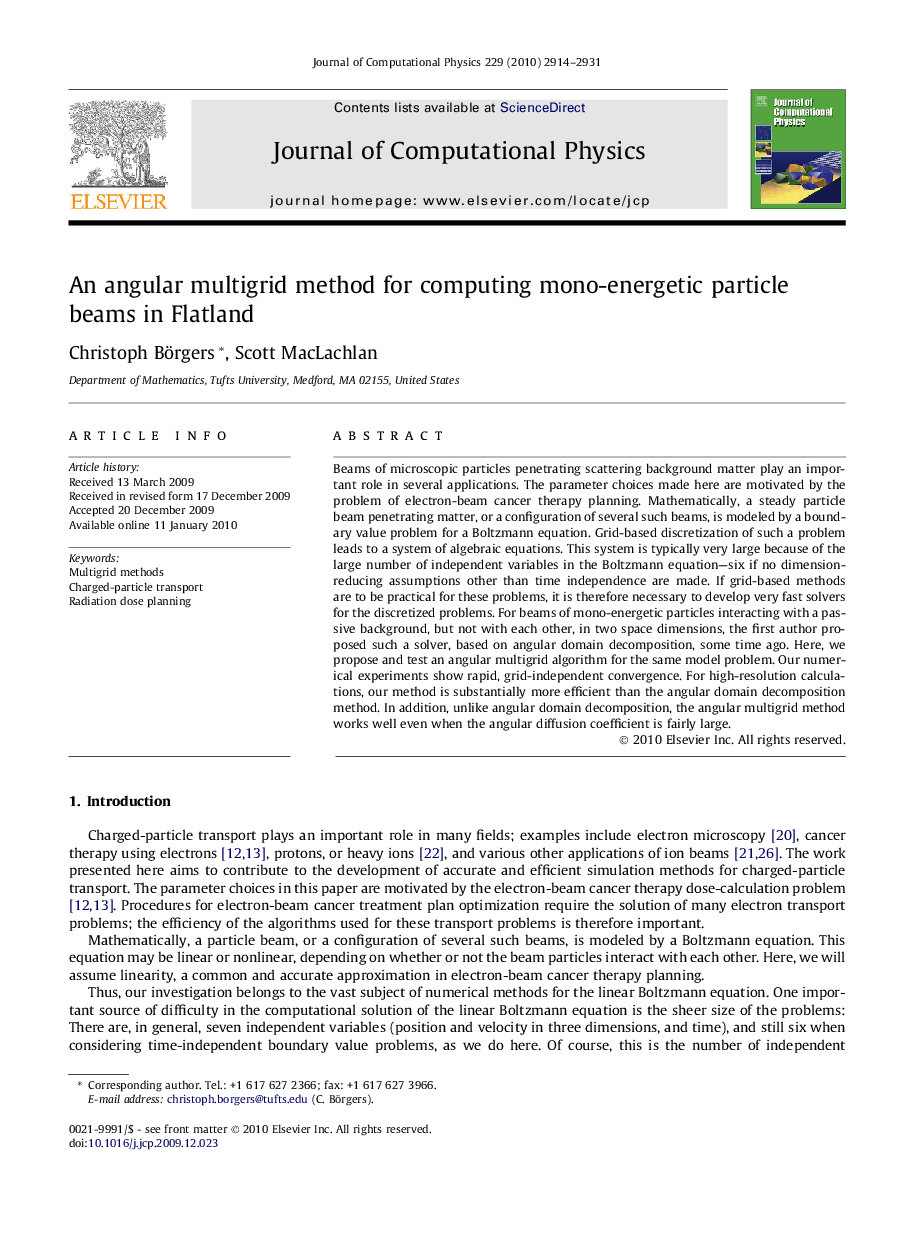| کد مقاله | کد نشریه | سال انتشار | مقاله انگلیسی | نسخه تمام متن |
|---|---|---|---|---|
| 522495 | 867830 | 2010 | 18 صفحه PDF | دانلود رایگان |

Beams of microscopic particles penetrating scattering background matter play an important role in several applications. The parameter choices made here are motivated by the problem of electron-beam cancer therapy planning. Mathematically, a steady particle beam penetrating matter, or a configuration of several such beams, is modeled by a boundary value problem for a Boltzmann equation. Grid-based discretization of such a problem leads to a system of algebraic equations. This system is typically very large because of the large number of independent variables in the Boltzmann equation—six if no dimension-reducing assumptions other than time independence are made. If grid-based methods are to be practical for these problems, it is therefore necessary to develop very fast solvers for the discretized problems. For beams of mono-energetic particles interacting with a passive background, but not with each other, in two space dimensions, the first author proposed such a solver, based on angular domain decomposition, some time ago. Here, we propose and test an angular multigrid algorithm for the same model problem. Our numerical experiments show rapid, grid-independent convergence. For high-resolution calculations, our method is substantially more efficient than the angular domain decomposition method. In addition, unlike angular domain decomposition, the angular multigrid method works well even when the angular diffusion coefficient is fairly large.
Journal: Journal of Computational Physics - Volume 229, Issue 8, 20 April 2010, Pages 2914–2931